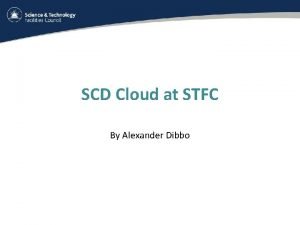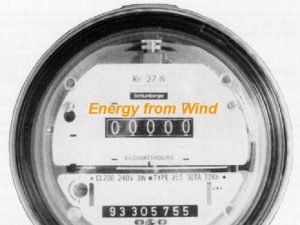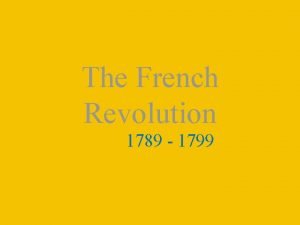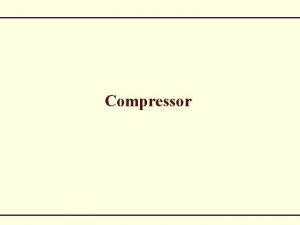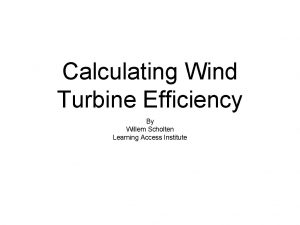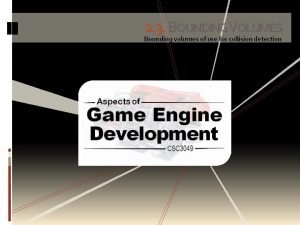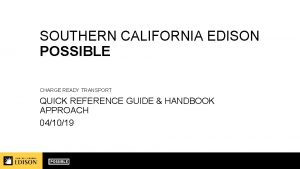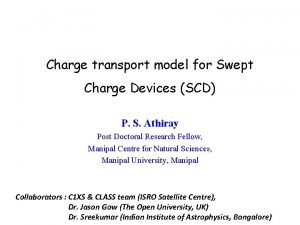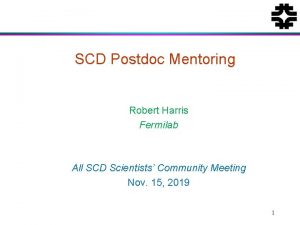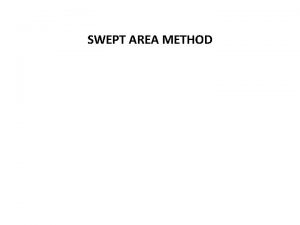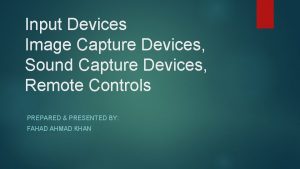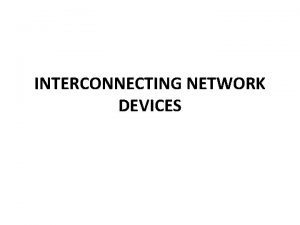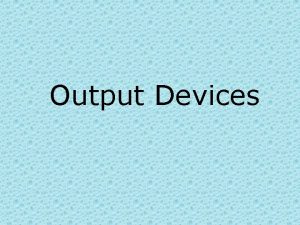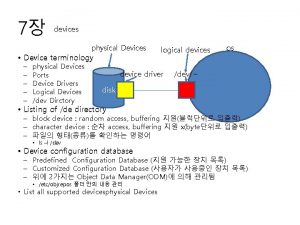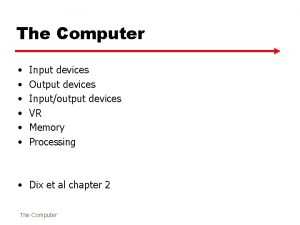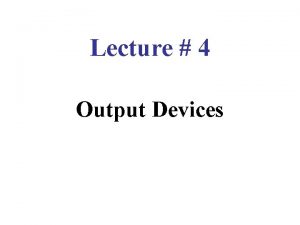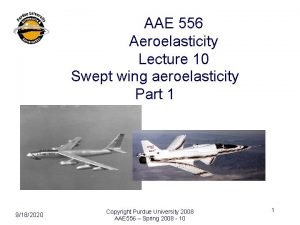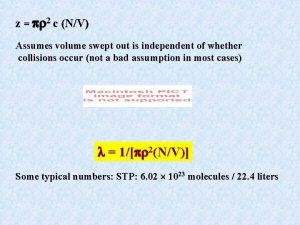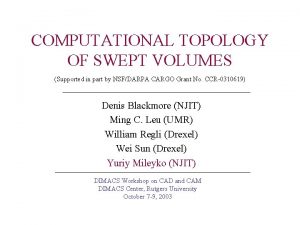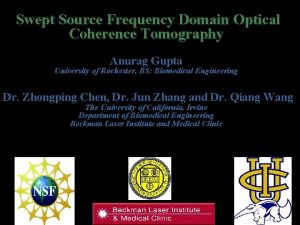Charge transport model for Swept Charge Devices SCD






























- Slides: 30

Charge transport model for Swept Charge Devices (SCD) P. S. Athiray Post Doctoral Research Fellow, Manipal Centre for Natural Sciences, Manipal University, Manipal Collaborators : C 1 XS & CLASS team (ISRO Satellite Centre), Dr. Jason Gow (The Open University, UK) Dr. Sreekumar (Indian Institute of Astrophysics, Bangalore)

C 1 XS achievement - First detection of Na 1. 04 ke. V – First direct measurement of enhanced Na abundances from the lunar surface The best fit to one of the C 1 XS spectrum with all components 6 th July 2009 (17: 10: 47 -17: 13: 59)

Swept Charge Device (SCD) (Developed by e 2 V technologies Ltd. , UK) • 1 D X-ray CCD • Continuous diagonal clocking – Minimize surface generated leakage current – High rate of periodic charge clocking (100 k. Hz/sample) • High spectral performance with minimal cooling CCD-54 used in C 1 XS

SCD (CCD-54) in C 1 XS • Depletion depth ~ 35 – 40 µm • On-board resolution ~ 153 e. V @ 6 ke. V with -10 o C • Heritage – SMART-1 (DCIXS) – Chandrayaan-1 (C 1 XS) • Pitch - 25µm • Each unit area – 1. 07 cm 2 Measured X-ray charge CCD-54 used in C 1 XS

Motivation for Charge Transport Model �Better understand Spectral Redistribution Function (SRF) - RMF Reduce uncertainties in spectral response �Augment calibration Improved global lunar elemental mapping using Chandrayaan-2 Large Area Soft x-ray Spectrometer (CLASS)

Spectral Redistribution Function (SRF) of SCD Observed SRF of SCD CCD 54 at 8 ke. V – C 1 XS calibration Narendranath et al. , 2010 Photopeak LE rise LE shoulder • Complex SRF • Physical model for photon LE tail Cutoff Escape peak interaction and charge propagation

Charge Transport Model (CTM) for SCD • Generic photon source input – Photons spectrum on top of CCD – Spatial distribution : Uniform source, Different geometry • Photon interaction, charge-cloud spreading, escape peaks, pixel mapping and charge collection • Simulate diagonal clocking and readout - output – Raw pseudo linear output, Event selection with thresholds

CTM for SCD Monte Carlo simulation • Ideal Si based X-ray detector • Written in IDL with the aim to be generic • Interactions considered – Field zone, Field free zone, Channel stop • Photon loss – Dead layer & substrate

Interaction zones & Dominant physics ~1. 5µm 35µm 15µm 600µm Buried Channel V Dead layer (recombine) Field zone (drift) Field-free zone (diffusion) Substrate (recombine) Drawn not to scale

Equations governing CTM of SCD Kurniawan & Ong 2007 Assumes Charge cloud distribution is Gaussian – Pavlov & Nousek 1999 Hopkinson 1984; Pavlov & Nousek 1999

Equations governing CTM of SCD Townsley et al. , 2002 • Channel stop – Followed steps similar to ACIS modeling – Currently assumed energy independence for tuning parameters (α and χ)

Event selection in C 1 XS • Single Pixel event

8. 047 ke. V Interaction zone SRF components Channel stop LE shoulder, LE tail Field-free zone LE rise, LE tail Field zone Photopeak, LE shoulder, LE tail, cutoff, Escape peak 4. 510 ke. V Spectral components of SCD

CTM results Vs C 1 XS ground calibration 5. 414 ke. V 8. 047 ke. V

Energy dependence of SRF Systematic variations Channel stop interactions? Concentration of dopants in the boundary? Possible suggestions for further improvements!

Summary of CTM • Modeled photon interaction, charge generation & propagation in SCD • Identified major sources contributing to the observed SRF – CTM results matches well with C 1 XS ground calibration data • Studied Energy dependence of SRF – Fraction of off-peak events are underestimated in CTM – Fine tuning of channel stop interactions required

SCD (CCD 236) for CLASS • Each unit – 4 cm 2 • 2 phase clock • Pitch – 100 µm – Less split fraction • CLASS – 64 cm 2

Measured X-ray charge CCD-236 being used in CLASS

Data comparison Courtesy - Dr. Jason, The Open University, UK Dr. Phillipa,

Future Work • Detailed study of dead layer interaction – Investigate dead layer interactions (Si – Si. O 2 – Si 3 N 4) • Investigation of Channel stop interactions – Energy dependence and SRF contribution • Testing and validation for Bulk SCDs • Optimizing event selection and split threshold

Thank You

Interaction zones & Dominant physics ~1. 5µm 35µm 15µm 600µm Buried Channel V Dead layer (recombine) Field zone (drift) Field-free zone (diffusion) Substrate (recombine)

Single pixel events FF zone Field zone Substrate Drawn not to scale – CCD 54

Multi pixel events FF zone Field zone Substrate Drawn not to scale – CCD 54

Equations governing CTM of SCD

Remote sensing X-ray studies of the Moon • Apollo 15, 16 (XRS); SMART-1 (DCIXS); KAGUYA (XRS) • CHANDRAYAAN-1 (C 1 XS) – First lunar bound XRF experiment to observe the Moon with a good spectral resolution

CTM for SCD • Written in IDL with the aim to be generic • Implementation of the SCD architecture – Diagonal charge transfer – Pseudo linear charge output • Event processing in SCD (adopted in C 1 XS) – Selection and optimization of event selection criteria – Optimize event and split threshold • Study the SRF and its dependencies

Motivation for Charge Transport Model • For accurate lunar surface composition – High sensitive and resolved measurement of major rock-forming elements (Na, Mg, Al, Si, Ca, Ti, Fe) – Reduce uncertainties in the derived XRF line fluxes • To better understand Spectral Redistribution Function – To reduce uncertainties in spectral response – Dependencies : Energy, Event selection criteria Improved global lunar elemental mapping using Chandrayaan-2 Large Area Soft x-ray Spectrometer (CLASS)

Spectral Redistribution Function (SRF) of SCD Observed SRF of SCD CCD 54 at 8 ke. V – C 1 XS calibration E Detector LE rise LE shoulder counts Photopeak LE tail Cutoff Escape peak Narendranath et al. , 2010 Energy • Physical model for photon interaction and charge transportation to understand the complex SRF of SCD

Outline of the talk • Chandrayaan-1 X-ray Spectrometer – An overview • Introduction to Swept Charge Devices • Need for a charge transport model – Algorithm development and implementation – Validation with ground calibration data • Application of model for the upcoming Chandrayaan 2 X-ray spectrometer (CLASS)
 Warning light
Warning light Stfc scd
Stfc scd Past tense sweep
Past tense sweep Swept area method
Swept area method Why did the great fear swept through france
Why did the great fear swept through france Fdot swept
Fdot swept Effective swept volume of compressor
Effective swept volume of compressor Wind turbine efficiency calculation
Wind turbine efficiency calculation Swept volume
Swept volume As new industrialism swept over the land
As new industrialism swept over the land Fill in grabbed burst swept pulled
Fill in grabbed burst swept pulled K-dops
K-dops Uniport symport antiport
Uniport symport antiport Active transport
Active transport Passive transport vs active transport venn diagram
Passive transport vs active transport venn diagram Active vs passive transport venn diagram
Active vs passive transport venn diagram Pinocytosis vs phagocytosis
Pinocytosis vs phagocytosis Primary active transport vs secondary active transport
Primary active transport vs secondary active transport Bioflix activity membrane transport active transport
Bioflix activity membrane transport active transport Active and passive transport
Active and passive transport Bioflix activity membrane transport diffusion
Bioflix activity membrane transport diffusion Charge ready transport
Charge ready transport Difference between charge and electric charge
Difference between charge and electric charge Electrons flowing
Electrons flowing Formuö
Formuö Typiska drag för en novell
Typiska drag för en novell Nationell inriktning för artificiell intelligens
Nationell inriktning för artificiell intelligens Returpilarna
Returpilarna Varför kallas perioden 1918-1939 för mellankrigstiden?
Varför kallas perioden 1918-1939 för mellankrigstiden? En lathund för arbete med kontinuitetshantering
En lathund för arbete med kontinuitetshantering Särskild löneskatt för pensionskostnader
Särskild löneskatt för pensionskostnader

